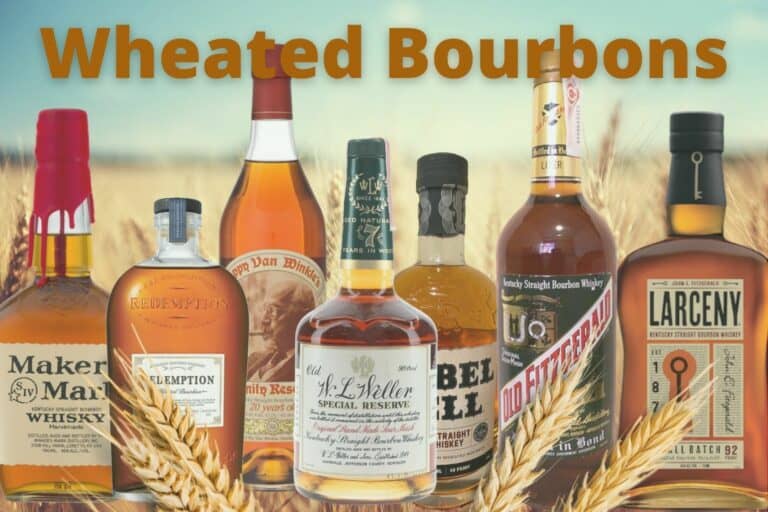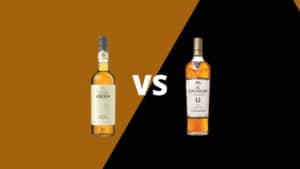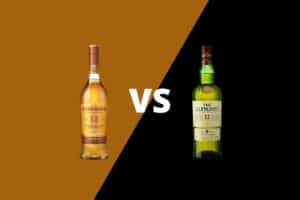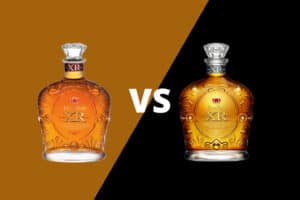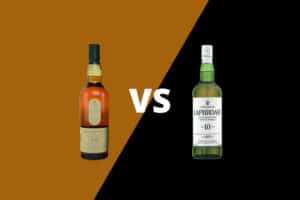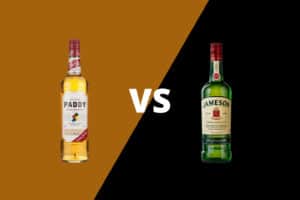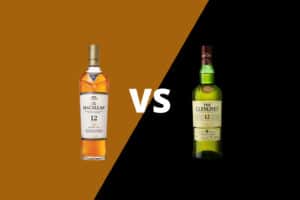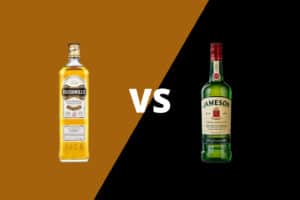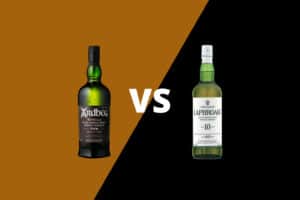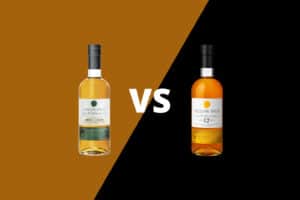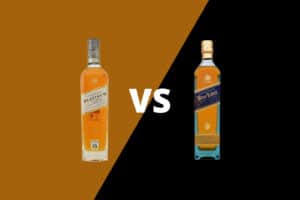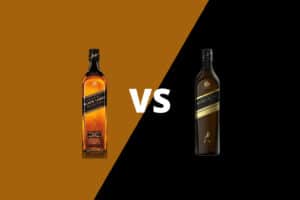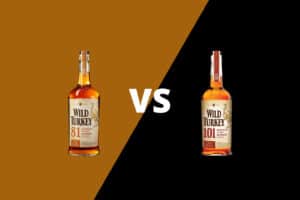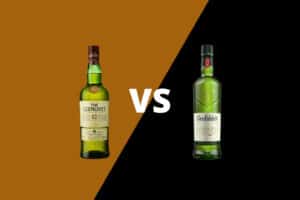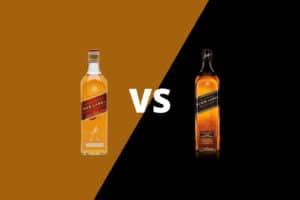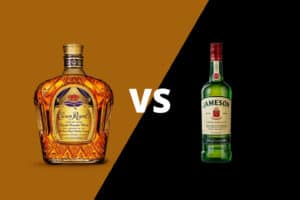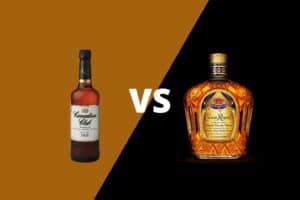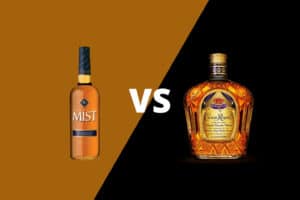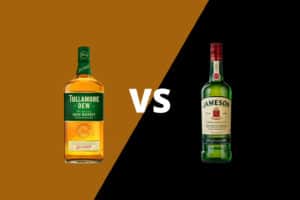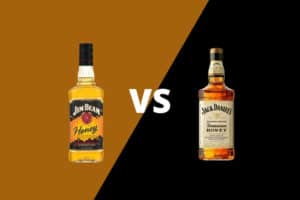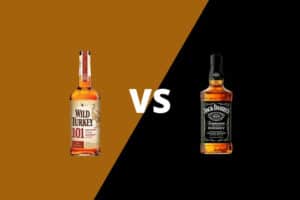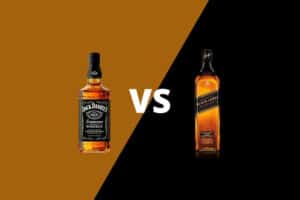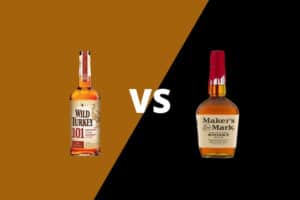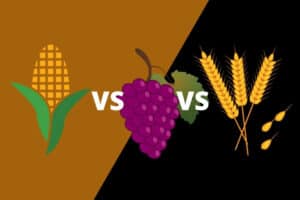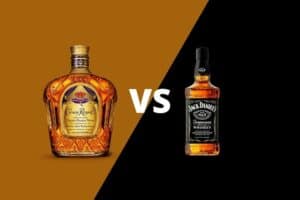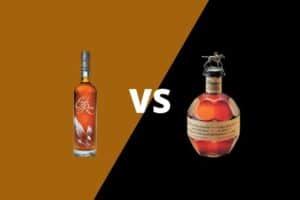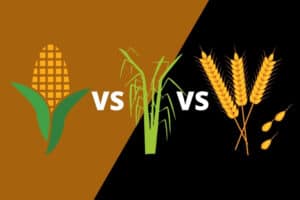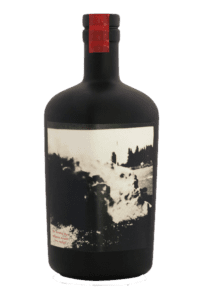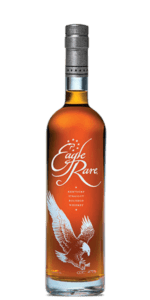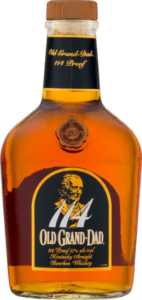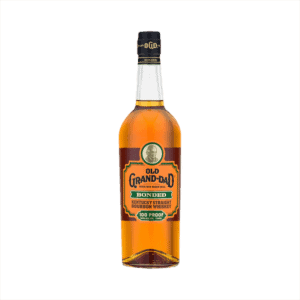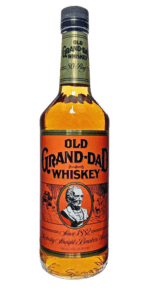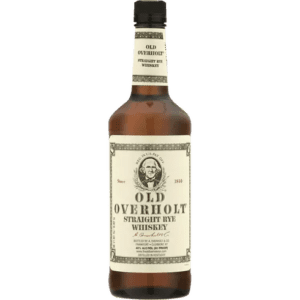You might have trouble finding the term ‘wheated bourbon’ or ‘wheated whiskey’ on the label of a bottle in your local liquor store.
But it’s a loaded term that has the power to distinguish the bourbon connoisseur from the new initiate. And if you’re a bar manager, beverage director or in charge of a spirits training program, you must understand the subtle difference the important wheated bourbon sub-category can make on your bottom line.
In this post, we’ll take a look at what wheated whiskey is, how the simple act of using wheat in a bourbon mashbill leads to its signature sweet flavor and mellow character and why bourbon professionals, as well as casual bourbon drinkers, make such a big deal about this whiskey-making style.
Table of Contents
What is a Wheated Bourbon?
A glance at the whiskey aisle of your local liquor store might make you think that bourbon is bourbon. But in reality, it’s all about that mash bill, baby.
Wheated bourbons still follow the requirements to be considered bourbon — including the use of 51 percent corn and new American charred oak barrels during maturation. But for these products, the whiskey maker has replaced the more common rye grain used in a typical bourbon mash bill with wheat to produce an entirely different flavor profile. While still meeting all the criteria required of the bourbon category, this style allows distillers to create distinct flavor combinations.
But I thought bourbon was made with corn?
You’re right! Perhaps we’ve gotten ahead of ourselves…
Let’s review the basics of bourbon.
All bourbon is made with corn — at least 51 percent corn, to be exact, as required by the U.S. Tobacco and Alcohol Tax and Trade Bureau. But the TTB is open to distillers filling out the remaining 49 percent of the mash bill with whatever cereal grains they like.
Traditionally, all bourbons contain a portion of malted barley, which contains powerful enzymes that allow the conversion of starch molecules in the grains to sugars the yeast can consume and turn into alcohol — a process called saccharification.
So in every bourbon, the corn is the primary grain — making up at least half, and often about three-quarters, of the mash bill or list of grain ingredients. The rest of the mash bill consists of secondary grains. Since most bourbons contain malted barley, the remainder of the mash bill is called the flavoring grain. The majority of bourbon brands use the spicy rye grain as the flavoring grain.
Except, of course, in wheated bourbons. Wheated bourbons contain a mash bill made up of corn, wheat and malted barley.
There are some caveats. Some mash bills contain both rye and wheat, which imbues the resulting distillate a complex character — sweet and spicy, with lots of depth. And some bourbons contain exotic grains — cereal grains permitted in the production of bourbon but not generally considered in the average distiller’s playbook. Exotic grains include cereals like oats, sorghum, buckwheat, rice and quinoa. These grains add notes not usually considered in the traditional bourbon flavor wheel. Some wheated bourbons contain no malted barley because distillers in the United States can use lab-created enzymes during fermentation. Although they are outlawed in Scotland, products like diazyme and amylex are allowed in the U.S., giving distillers the option of bypassing the traditional use of malted barley.
But in today’s lesson, we’re going to focus on mash bills that contain mostly corn, with wheat as the flavoring grain and some malted barley thrown in to make the yeast happy during fermentation.
What’s so special about wheat?
Wheat — Latin name Triticum aestivum — is a grain that is one of humanity’s most cultivated crops. It is an excellent food source because of its tightly packed proteins. But those proteins make the starches less accessible to yeast, which requires short sugar molecules to produce alcohol.
By malting grains, you can release enzymes customarily used to help feed the germinating seed and harness them for fermentation. These enzymes evolved to break down long starch molecules into shorter sugar molecules that the shooting plant can use for fuel as it sprouts from the earth. Germinating seeds use the converted sugar as energy while establishing roots and leaves so they can conduct photosynthesis on their own.
Humans learned early on that we could hijack this process to make booze. Yeast naturally party anytime they’re exposed to fruit sugars. But to make alcohol from grain starches, you must break those starch chains down into disaccharide and monosaccharide sugar molecules the yeast can consume and turn into alcohol. Some grains — e.g., malted barley — have enough enzymes to convert the starches to any other grains included in the mash with them.
This brings us to wheat.
Wheat is nearly impossible to malt effectively. And while its elasticity makes it great for rolling dough, it also makes the distiller’s life hell, leading to weirdly viscous mashes and gumming up the still. But its availability as a staple food source in most traditional whiskey-making societies meant that it was plentiful come harvest time should a distiller want to pitch a few handfuls into the mash.
But in America, the frontier cultures of Maryland, Western Pennsylvania and Kentucky — where bourbon originated — traditionally favored rye as a food source because of its hardiness and resistance to blight. For these isolated settlers, a failed harvest could mean certain death, so they learned to adapt to the use of rye — hence its prominence as a traditional flavoring grain.
However, as the bourbon industry matured, distillers looked to wheat grain in order to differentiate their flavors from other whiskeys. William Laurel Weller is often credited for creating one of the first wheated bourbon products in the mid-1800s.
How does Wheated Bourbon taste?
Most people will describe the flavor of wheat as soft and slightly sweet. It is associated with a more rounded mouthfeel as well as a mellow finish.
Contrast this to the more commonly used rye grain, which is most often described as peppery and spicy.
By swapping rye with wheat, the distiller can create a more approachable product. The sweetness of the corn plays well with soft and mellow wheat grain to make a smooth bourbon that is excellent neat or on the rocks and can be enjoyed by both aficionados and those new to the bourbon category.
Other types of Bourbon and American Whiskey
To help understand all of the beautiful chaos in the world of mash bills, distillers and whiskey enthusiasts tend to think of three general styles to bourbon making — traditional, high-rye and wheated. While these terms are generalities that are unregulated — which leaves the marketing wonks license to run amok on the label — they help you wrap your brain around what your tongue is experiencing.
Traditional bourbon describes a product made with about 75 percent corn and the rest of the grains more-or-less evenly split between malted barley and rye grain.
A high-rye bourbon is a bourbon that has a higher percentage of rye in the mash bill. High-rye bourbon should not be confused with American rye whiskey — an entirely separate product category that contains at least 51 percent rye in the list of grain ingredients.
Wheated bourbon describes products that have foregone rye and swapped it for wheat. It’s the focus of this post — and an underappreciated sub-category of bourbon that is starting to earn the recognition it deserves. Let’s check out some examples!
As with high-rye bourbon and rye whiskey, wheated bourbon should not be confused with wheat whiskey.
Wheat Whiskey is an entirely different — although rarely utilized — whiskey category under the United States standards of identity. Wheat whiskey is a product that is made from at least 51 percent wheat and matured in a new American charred oak barrel. The most widely available example of a wheat whiskey might be Bernheim wheat whiskey from Heaven Hill.
[RELATED: Types of Whiskey]
Best Wheated Bourbons
Let’s check out some of the big hitters in the wheated bourbon sub-category.
Pappy Van Winkle
The term cult classic doesn’t begin to do this brand justice. Many of us first heard about wheated bourbons due to the success and popularity of the Pappy Van Winkle brand.
Today, this brand is a unicorn. Any bourbon hunter out there will talk about landing ‘the big one’ — a bottle in the Van Winkle range at suggested retail price — the way an angler describes that legendary big catch.
You may have already heard the origin story of Julian’ Pappy’ Van Winkle and how he was formative in merging the A. Ph. Stitzel and Weller distilleries. We’ll save the history and provenance of this brand and subtle nuances of the vaunted ‘Stitzel-Weller juice‘ for another post. But any beverage manager should be able to tell you the importance of this brand.
The Van Winkle lineup has a mash bill that contains about 17 percent wheat. Let’s discuss the specific offerings from the 2021 stable, so you’re ready should you spot a bottle in its native environment. Remember, the prices below reflect the suggested retail price from the manufacturer. Those living in non-control states will likely see markups from retailers that reflect what some might consider astronomical market values.
- Old Rip Van Winkle Bourbon 10-Year-Old, 107-proof — $69.99
- Old Rip Van Winkle Special Reserve Bourbon 12-Year-Old — $79.99
- Old Rip Van Winkle Family Reserve Rye 13-Year-Old — $119.99
- Pappy Van Winkle’s Family Reserve Bourbon 15-Year-Old — $119.99
- Pappy Van Winkle’s Family Reserve Bourbon 20-Year-Old — $199.99
- Pappy Van Winkle’s Family Reserve Bourbon 23-Year-Old — $299.99
Can’t get your hands on a bottle of Pappy? We know exactly how that feels.
But if you wanted to get your hands on something that gets you close, we’ve put together a list of great wheated bourbon alternatives to Pappy Van Winkle.
Maker’s Mark
If the Pappy Van Winkle line of bourbons has turned wheated bourbon into an obsession for those with fat wallets who like expensive toys, Maker’s Mark may have cornered the market on mass appeal.
Maker’s Mark has been doing wheated bourbon since the 1950s, using soft red winter wheat to round out the mash bill, which is 70 percent corn, 16 percent wheat and 14 percent malted barley.
In addition to the classic Maker’s Mark offering, which retails for about $27, the brand has released a Maker’s 46 bottling at about $40 with the same mash bill but adds French oak staves to a finishing barrel. Maker’s Mark has released wood finishing series and cask strength versions as well.
Old Fitzgerald
When the Stitzel-Weller distillery closed, the Weller brand was acquired by Buffalo Trace, while producer Heaven Hill gained rights to the Old Fitzgerald brand. Today, Old Fitzgerald has a mash bill of 68 percent corn, 20 percent wheat and 12 percent malted barley.
Like many of the bottles on this list, it can be challenging to find. So, if you see a 750mL bottle on the shelf of a liquor store near you for about $15, it may make sense to pull the trigger. A bottled-in-bond version and other bottlings are also available.
Larceny Bourbon
In many ways, Larceny Bourbon acts as a brand extension for the historic Old Fitzgerald brand. Parent company Heaven Hill makes both from the same mash bill: 68 percent corn, 20 percent wheat and 12 percent malted barley.
Released in 2012 as an homage to the time that Old Fitzgerald was used as a legally distributed medicinal whiskey during Prohibition — and some of the best barrels under bonding agent John E. Fitzgerald’s purview would be ‘taxed’ by ‘quality assurance’ inspections during his rounds in the rickhouse.
Larceny Bourbon is more widely available than Old Fitzgerald and can be found for about $27 for a 750mL bottle at 92-proof.
W.L. Weller
Named after the 19th-century distiller William Larue Weller — the ‘Weller’ in Stitzel-Weller — this brand is sought out by Pappy fans because of the two brands’ similarities. Both are produced by Buffalo Trace/Sazerac from the same mash bill — Pappy and Weller both have a mash bill that contains about 17 percent wheat. Because of the demand, most retailers in non-control states are on allocation, and it can be difficult for customers who live in control states to find.
The Weller Special Reserve Straight Bourbon 90-proof is a steal at about $27. W.L. Weller Full Proof Straight Bourbon 114-proof is about $50 for a 750mL bottle.
Redemption Wheated
A relative newcomer to the category, Redemption Wheated Bourbon makes this list because of its remarkable mash bill: 51 percent corn, 45 percent wheat and 4 percent malted barley.
You can find a 750mL bottle for about $45 at 96-proof.
Rebel Yell
Since 1984, Rebel Yell has been produced by Luxco. Until recently, it was sourced from Heaven Hill, and the Rebel Yell mash bill — 68 percent corn, 20 percent wheat and 12 percent malted barley – reflects other Heaven Hill wheated bourbons. Now, the production takes place at the new Lux Row facility in Bardstown, Kentucky.
Rebel Yell can be found for about $16 for an 80-proof 750mL bottle.
Craft Whiskey Wheaters
The craft bourbon scene has created some great examples of wheated bourbons. While many of these brands may not be available on a national scale, some regional brands have created a lot of excitement. These include Wyoming Whiskey, Wigle Whiskey from Pittsburgh, Smooth Ambler from West Virginia, Treaty Oak and Garrison Brothers out of Texas, Willett Distillery in Kentucky, St. Augustine in Florida and many more.
What to Expect in a Wheated Whiskey
Okay. So you’ve read through this entire primer, and you’re ready to take the next step — getting this liquid into a glass for a bourbon blind tasting or whiskey flight. It’s time to take that bourbon knowledge and get your taste buds involved!
One option would be to take the bourbon lineup we’ve listed above and place them side-by-side in a blind tasting to see whether you can pair the mash bill with the flavor profile. Or, you could put together a lineup of traditional bourbons — a high-rye, traditional bourbon and one with a whisper of wheat — to see if you can figure out how the bourbon recipe, along with the baking spice notes gained from the barrel, influence the finished product.
Either way, the next time you walk into your favorite bourbon establishment, you will have an opportunity to earn a whole new appreciation for bourbon — and you might impress the knowledgeable pro tending bar!

